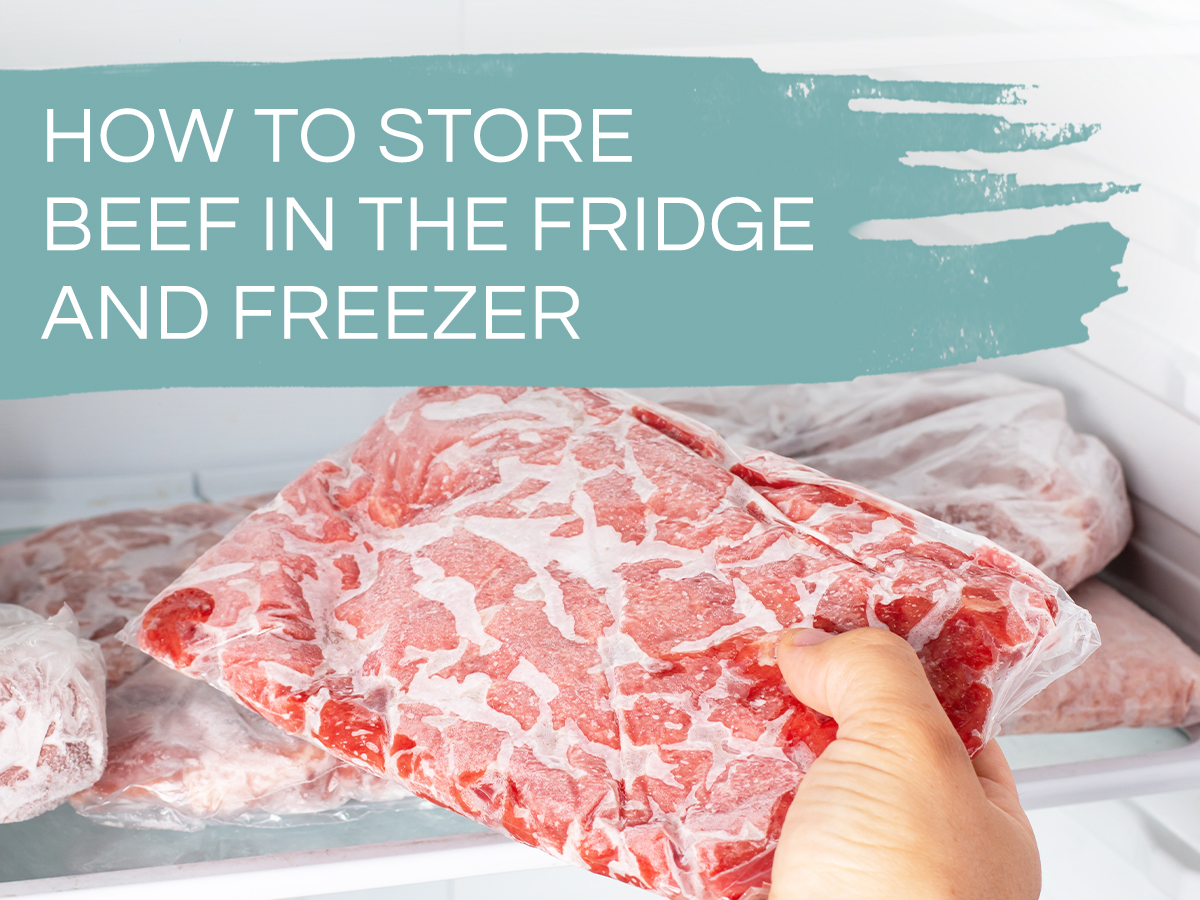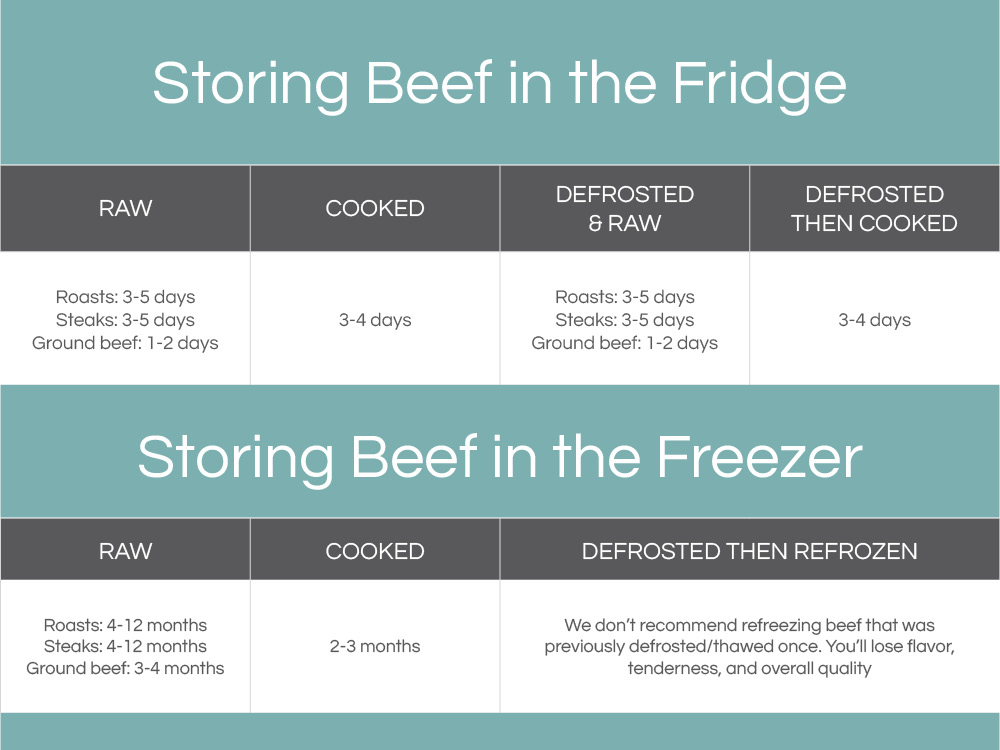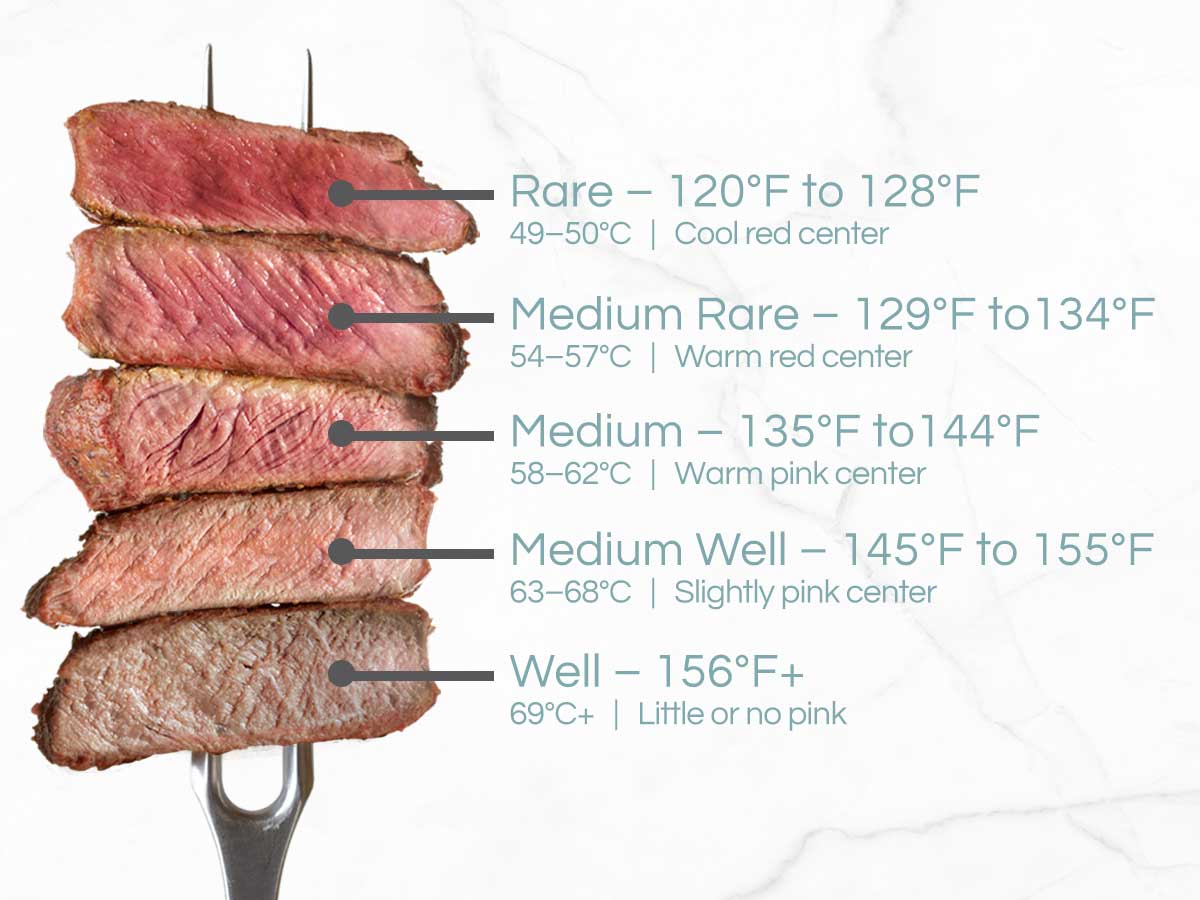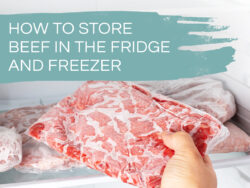
Everything You Need to Know About Storing Beef in the Fridge and Freezer
Jul 7, 2025 | Cooking with Beef, Featured Post, Natural Angus Beef
Beef is a beloved kitchen staple for many reasons. It’s incredibly flavorful, easy to prepare, provides a wealth of essential nutrients, and, when stored properly, can always be on hand. However, there are some guidelines and rules to keep in mind when you’re storing beef in the fridge and freezer.
This article will outline everything you need to know about storing different cuts of beef safely so you can preserve its quality and flavor. After all, every meal you make with beef should be an exceptional eating experience.
Here are expert-approved storage tips to keep your beef fresh, safe, and delicious.
How to Store Beef in the Fridge at Home
Storing Raw Beef in the Fridge
You can store raw beef in the fridge a few different ways, depending on your preference:
- In original packaging
- In a clean, airtight glass container (glass is less porous than plastic)
- Tightly wrapped in plastic wrap or aluminum foil and placed on a tray to catch leaks
Storing Cooked Beef in the Fridge
Cooked beef can be stored in airtight glass or plastic containers. We prefer glass over plastic because glass is less porous than plastic (thus more hygienic), and glass is less likely to retain stains from dark marinades and sauces.
How Long Beef is Good in the Fridge
Raw Beef in the Fridge
- Roasts: 3-5 days
- Steaks: 3-5 days
- Ground beef: 1-2 days
Cooked Beef in the Fridge
Cooked beef is good in the fridge for 3-4 days.
Defrosted Beef in the Fridge
Defrosted beef can follow the above guidelines for raw and cooked. In summary:
- Defrosted raw beef in the fridge: 3-5 days for roasts/steaks, 1-2 days for ground beef
- Defrosted then cooked beef in the fridge: 3-4 days
How to Store Beef in the Freezer at Home
Storing Raw Beef in the Freezer
As the USDA shares, it’s safe to freeze meat directly in its original packaging. A caveat, though, is that this type of wrap is often permeable to air and may jeopardize the quality of the beef over time. The best way to store raw beef in the freezer is in vacuum-sealed packaging, whether you purchase a product pre-sealed from the store or if you vacuum-seal it yourself. And, if you’ve noticed that the packaging has accidentally been torn while in the freezer, the food is still safe to use—just rewrap it.
Storing Cooked Beef in the Freezer
You’ve prepared a spectacular roast or tasty backyard burgers, but you have leftovers. Now what? First, let the dish cool. Allowing food to cool slightly will prevent it from heating up your freezer and other foods in there. Once cooled slightly, put the dish in a ziptop bag, airtight container, or dedicated freezer bag. You can find plastic freezer bags at most grocery stores.
How to Store Beef: for Foodservice Pros
You can store beef in the fridge and freezer just like folks at home, but we recommend adhering to these guidelines:
- Label all food with the name of the item, the date it was opened (if raw and removed from the container), the date it was cooked (if cooked), and the use-by date
- Store raw beef away from other items and below prepared foods, fruit and vegetables, fish, and seafood
- Whole cuts (steaks, roasts, etc.) should go above ground meat and poultry
- Metal containers are best—they’re hygienic and less prone to breaking than glass
How Long Beef is Good in the Freezer
Raw Beef in the Freezer
- Roasts: 4-12 months
- Steaks: 4-12 months
- Ground beef: 3-4 months
Cooked Beef in the Freezer
Cooked beef can be stored in the freezer for 2-3 months.
Defrosted Beef that is Refrozen
We don’t recommend refreezing beef that was previously defrosted/thawed once. You’ll lose flavor, tenderness, and overall quality.

How to Portion Out and Repackage Beef for Future Meals
When you bring raw beef home from the store, there’s an easy way to ensure you always have delicious beef on standby. When you buy in bulk, you can divide the beef into portions, repackage it, and save it for future occasions.
Most often, meal preppers will buy ground beef in bulk—here’s how to repackage ground beef:
- Weigh out portions of beef that make sense for your favorite recipes. If you don’t have a particular recipe in mind, a good rule of thumb is to portion out 1/4-1/3 pounds (4-5.3 ounces) per person.
- Once divided, move each portion to a freezer ziptop bag. Quart-sized bags work for half pounds, while gallon-sized bags are perfect for one-pound portions.
- Before sealing each bag, use a rolling pin to gently flatten the meat to a half-inch thick. Press out the air and seal the bags.
- Label your bags with the date you froze them and their best-by date.
- Store your ground beef in the freezer for 3-4 months. Because you made your bagged portions flat and uniform, they’re simple to stack and organize.
The above steps work just as well with a vacuum sealer.
How to Safely Defrost Beef
Food safety pros say there are only three ways to defrost (thaw) beef: in the fridge, in cold water, and in the microwave. Never thaw on the counter or in other locations.
- If you’re thawing in the fridge, keep it in its original packaging and place it on a tray to catch leaks.
- If you’re thawing in cold water, keep it in its original packaging and submerge the beef in cold water. Change the water every 30 minutes.
- If you’re thawing in the microwave, get to know your microwave’s defrost functions. A good place to start is by entering the weight of the beef you’re thawing and microwaving it at a lower power level (20-30%).
How to Tell if Beef Has Gone Bad
Beef that has gone bad (or spoiled) usually has an unpleasant smell, a slimy or sticky texture, or signs of discoloration. However, you can’t always tell if beef has gone bad just from sight and smell. That’s why it’s crucial to follow freshness dates, refrigerate and freeze beef properly, cook it to the right temperature, and store and reheat leftovers correctly.
Food Safety Tips to Keep Your Kitchen Safe
Cook Beef to the Right Temperature
Use a clean plate, tray, or bowl to add spices, seasonings, and marinades. Have a digital-read meat thermometer handy as you cook. Near the end of the cooking time, insert the thermometer so the tip of the probe is in the middle of the cut. The FDA recommends cooking roasts and steaks to at least 145°F and ground beef to 160°F. Here’s a handy steak doneness guide to reference while you’re cooking.

Keep Raw Utensils and Cutting Boards Separate
- Separate raw beef, poultry, seafood, and eggs from other foods in your grocery shopping cart, grocery bags, and fridge
- Dedicate one cutting board to fresh produce and another to raw meat (red for raw, green for produce)
- Never place cooked food on a plate that previously held raw meat (unless you wash it first, of course)
- Don’t reuse marinades that you used on raw food
Stay Squeaky Clean
A clean kitchen not only looks great—it also helps your family stay healthy. After handling raw beef, wash your hands with warm water and soap for at least 20 seconds. Wash cutting boards, dishes, utensils, and countertops with hot, soapy water. And consider using paper towels in your kitchen rather than cloth towels.
Make Sure Your Fridge and Freezer are at the Right Temperature
Check the temperature of your fridge and freezer every few months. The fridge should be 40°F or below, and the freezer should be right at 0°F.
Organize Your Fridge for Optimal Food Safety
Raw beef (and other raw meats) should always be on the bottom shelf of your fridge. That area is the coldest part of the fridge and protects other food from cross-contamination caused by spills and drips. As we said above, keeping raw beef on a tray protects your fridge surfaces from leaks—and anything that makes your life easier is good, right?
You’re Ready to Create Spectacular Beef Dishes Safely
Now that you know how to store beef properly in the fridge and freezer, as well as defrost and cook it, there’s nothing standing between you and mouthwatering, nutrient-packed meals your guests will ask for by name. You can find Aspen Ridge® Natural Angus Beef at a store near you—it’s available at the butcher service counter or carefully wrapped and placed in the case by your store’s butchers.
Or, if you’re still hungry for cooking tips, check out our article, “How to Perfectly Cook 4 of the Most Versatile Cuts of Natural Angus Beef at Home.”
Foodservice and retail pros, we’d love to show you how our no antibiotics or added hormones ever, USA-raised natural Angus beef can help you impress customers. Let’s partner up.



